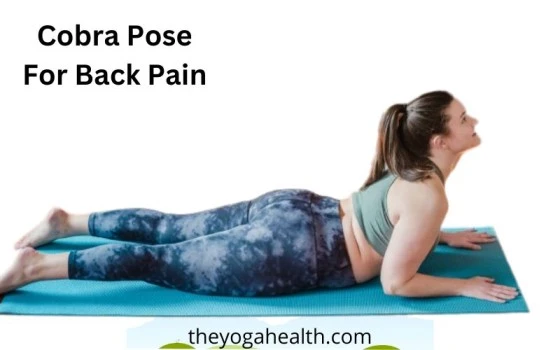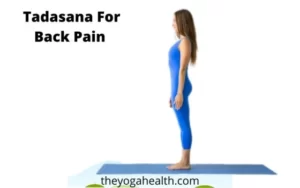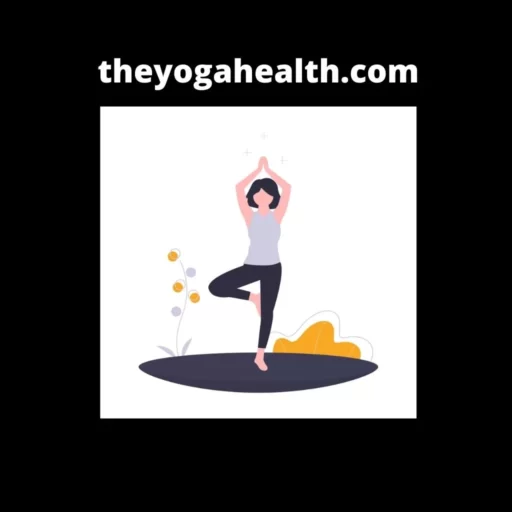Back pain is a very common problem these days and millions of people suffer from it worldwide. There can be many reasons for back pain like, poor posture, sedentary lifestyle, muscle strain or injuries.One very effective way is Cobra Pose for Back Pain relief.
Regular practice of yoga can also improve overall health of the spine. In this article we will focus on one specific yoga pose for back pain relief, that is known as the Cobra Pose.
This pose is found to be very beneficial for easing back pain. We will also explore its correct technique, benefits and scientific research for its effectiveness for back pain.
Table of Contents
Cobra Pose For Back Pain Relief
What is Cobra Pose?
The Cobra Pose is also known as Bhujangasana in the Sanskrit language. It resembles like a raised hood of a Cobra, thus this name. It is a simple yet very powerful backbend pose that targets the spine and strengthen the muscles around the back.
Regular practice of this pose can improve posture and give relief from lower back pain.
How to do Cobra Pose Correctly
Step-by-Step Guide
Inhale deeply and gently press your palms into the mat.
Step 1. Lie down flat on your stomach on a yoga mat.
Step 2. Extend your legs straight back and your feet tops should be touching the floor.
Step 3. Now place our palms on the mat just closer to your chest.
Step 4. Inhale deeply and gently press your palms into the mat.
Step 5. Now lift your head, chest and upper abdomen off the floor. Your lower abdomen and groin area should remain connected to the mat.
Step 6. Now straighten your arms fully as much as possible, make sure not to lock your elbows.
Step 7. Roll your shoulders back and down, open your chest and lift your upper body towards the ceiling. Keep your neck relaxed and do not strain or overextend.
Hold the pose for 15-30 seconds, breathing deeply.
To release, exhale slowly and lower your upper body back to the mat.
Benefits of Cobra Pose for Back Pain
Scientifically Proven Advantages
Spinal Flexibility:
Cobra Pose involves a gentle backward bend of the spine, which helps in increasing flexibility and reducing stiffness in the back.
Strengthening Back Muscles:
The pose targets the muscles along the spine, including the erector spinae, helping to strengthen and tone them.
Alleviating Lower Back Pain:
Regular practice of Cobra Pose can reduce discomfort and tension in the lower back region, which is a common area for back pain.
Improving Posture:
By opening the chest and stretching the front body, Cobra Pose helps counteract the effects of slouching, leading to better posture.
Stimulating Abdominal Organs:
This pose stimulates the abdominal organs, promoting digestion and potentially easing gastrointestinal issues that might contribute to back pain.
Precautions and Modifications
Safety First
While Cobra Pose can be highly beneficial, it is essential to practice it with care, especially if you have any pre-existing back conditions. Here are some precautions and modifications to consider:
Avoid Overextension:
Do not push yourself too hard into the backbend. Only go as far as your body allows comfortably.
Pregnancy:
Pregnant women should avoid practicing Cobra Pose, particularly during the later stages of pregnancy.
Back Injuries:
If you are suffering from back injuries, consult your yoga instructor before doing this pose.
High Blood Pressure:
If you are suffering from High Blood Pressure then you should perform this pose carefully or should altogether avoid this pose.
Modify the pose:
If you find it difficult to life your chest off the floor then you can keep your elbows bend and lift your chest as per your capacity. As shown in the picture below.

Scientific Research on Cobra Pose for Back Pain
Evidence and Studies
Several research studies have explored the benefits of yoga, including Cobra Pose, for back pain relief.
In the journal of Bodywork and Movement Therapies (2016) a study on the practice of yoga was published. It proved that practicing yoga including Cobra Pose significantly reduce pain and disability in individuals with chronic lower back pain.
Yet another study published by the International Journal of multidisciplinary Research (2023) found that Cobra pose significantly increase the flexibility of the spine. The studies also proved that it reduce lumbar lordosis, which can help in alleviating lower back pain caused by excessive arching.
Incorporating Cobra Pose into Your Routine
Tips for a Consistent Practice
To experience the maximum benefits of Cobra Pose for back pain relief, it’s crucial to incorporate it into your regular yoga routine. Here are some tips to help you establish a consistent practice:
Warm-Up:
Before attempting Cobra Pose, warm up your body with gentle stretches and movements. Focus on warming up your spine, shoulders, and abdominal muscles to prepare them for the backbend.
Frequency:
Aim to practice Cobra Pose at least three to four times a week. Consistency is key to experience progress and relief from back pain.
Duration:
Start by holding the pose for 15-30 seconds and gradually increase the duration as your back becomes more flexible and comfortable with the posture.
Combine with Other Poses:
Cobra Pose works well when combined with other yoga poses that complement its benefits. Consider incorporating poses like Child’s Pose, Cat-Cow, and Sphinx Pose to create a well-rounded practice.
Breathing:
Focus on deep and steady breathing while holding the pose. Inhale as you lift your chest, and exhale as you release back to the mat. Breathing mindfully enhances the relaxation and effectiveness of the pose.
The detailed article on Cobra Pose (Bhujangasana) describing its meaning, step by step instructions, its Benefits, Variations and Precautions etc, is available at the link below.
Cobra Pose In Yoga (Bhujangasana): Benefits, Steps & Precautions
Modifications for Beginners
Easing into Cobra Pose
If you’re a beginner or have limited flexibility, the full expression of Cobra Pose might be challenging. Don’t worry; there are modifications you can try to ease into the pose gradually:
Baby Cobra Pose:
Start by lifting your chest just a few inches off the mat, keeping your arms slightly bent. This variation reduces the intensity of the backbend while still providing benefits.
Cobra with Props:
Place a bolster or rolled-up blanket under your chest for support. This modification can help lift you into the pose with less strain on your back.
Forehead Resting:
If lifting your head is uncomfortable, you can rest your forehead on the mat while keeping your palms pressing down and elbows bent. This variation allows you to experience a gentle stretch in the spine.
Mindful Alignment Cobra Pose Tips
Enhancing Your Practice
To maximize the benefits of Cobra Pose and prevent unnecessary strain, pay attention to proper alignment during the pose:
Engage Core Muscles:
Activate your core muscles during the backbend to support your lower back and protect it from excessive compression.
Equal Weight Distribution:
Ensure that you’re distributing the weight evenly between your palms. Avoid putting excessive pressure on one side, which could lead to imbalances and discomfort.
Shoulders Away from Ears:
Keep your shoulders away from your ears to maintain an open chest and avoid tension in the neck and shoulders.
Gaze Direction:
Look straight ahead or slightly upward while in the pose. Avoid straining your neck by trying to look too far up or down.
Listen to Your Body:
As you practice Cobra Pose, pay attention to how your body responds. If you experience pain or discomfort beyond a gentle stretch, ease out of the pose and modify as needed.
Combining Cobra Pose with Relaxation
Savasana (Corpse Pose) Integration
After practicing Cobra Pose, it’s essential to take a moment of relaxation to allow your body to integrate the benefits fully. Savasana, also known as Corpse Pose, is a classic yoga relaxation pose that promotes rest and rejuvenation.
Remain in Savasana for 5-10 minutes, allowing the benefits of Cobra Pose to settle in and promoting overall relaxation.
Conclusion:
Cobra Pose for back pain is a valuable tool for individuals seeking relief from back pain and improved spine health. With its gentle yet effective backbend, this yoga asana helps strengthen the back muscles, increase flexibility, and alleviate lower back discomfort.
Remember to approach the pose carefully and paying attention to proper alignment. Gradually work towards a deeper expression of the posture.
Regular practice, combined with other yoga poses and relaxation techniques, can contribute significantly to your overall well-being and back pain management.
Do share your experience of doing Cobra Pose For Back Pain, it will definitely help other readers as well and if You have any question or comments regarding this Pose, you can mention so in the comments section below.





